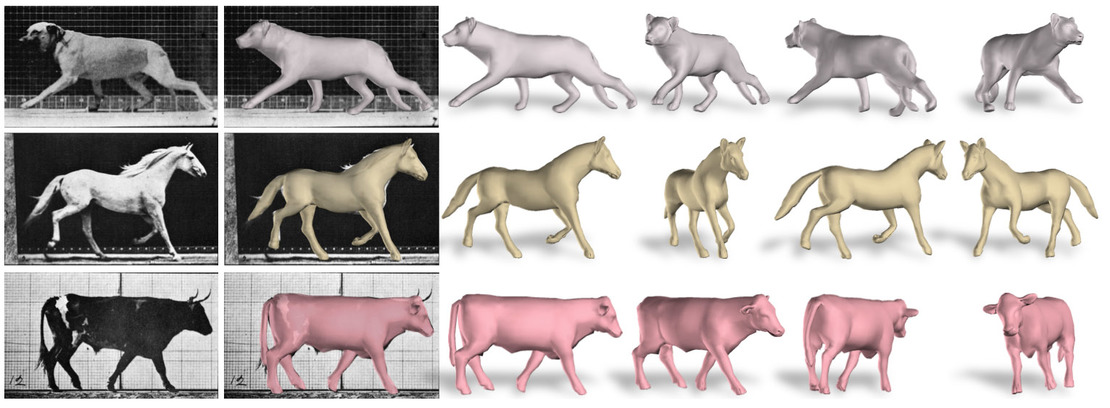The SMAL Model
A Skinned Multi-Animal Linear Model of 3D Animal Shape

Abstract
The SMAL model is a 3D articulated model that can represent animals including lions, tigers, horses, cows, hippos, dogs. SMAL is inspired by the SMPL model, a realistic, articulated, 3D model of the human body which captures human body shape variation in a low-dimensional Euclidean subspace, and can be fit to image data. The SMPL model is learned from thousands of 3D scans of people in specific poses, which is infeasible with live animals. They are clearly much less cooperative than humans! Our idea is to learn our model from a small set of 3D scans of toy figurines in arbitrary poses, including lions, cats, tigers, dogs, horses, cows, foxes, deers, zebras, and hippos. This approach requires new tools for aligning scans of animals with different shape and size (we also consider babies) to a common template. We therefore introduce a new model that we call GLoSS for Global Local Synthetic Shape model that allows us to accurately align animal scans from different quadruped families with very different shapes and poses. With the alignment to a common template we learn a shape space representing the training animals. New animal shapes can be sampled from the model, posed, animated, and fit to data. In our CVPR 2017 paper we demonstrate generalization by fitting it to images of real animals including species not seen in training.
News & Updates
THURSDAY, JUNE 15TH 2017
You can find the model and CVPR result downloads in our download page now.
FRIDAY, MAY 22ND 2017
Welcome to the SMAL Model website. Here you can find information, data and examples of our model. The downloads will be available soon.
Referencing the Model
Here are the Bibtex snippets for citing MPI SMAL in your work.
@inproceedings{Zuffi:CVPR:2017,
title = {{3D} Menagerie: Modeling the {3D} Shape and Pose of Animals},
author = {Zuffi, Silvia and Kanazawa, Angjoo and Jacobs, David and Black, Michael J.},
booktitle = {IEEE Conf. on Computer Vision and Pattern Recognition (CVPR)},
month = jul,
year = {2017},
month_numeric = {7}
}



